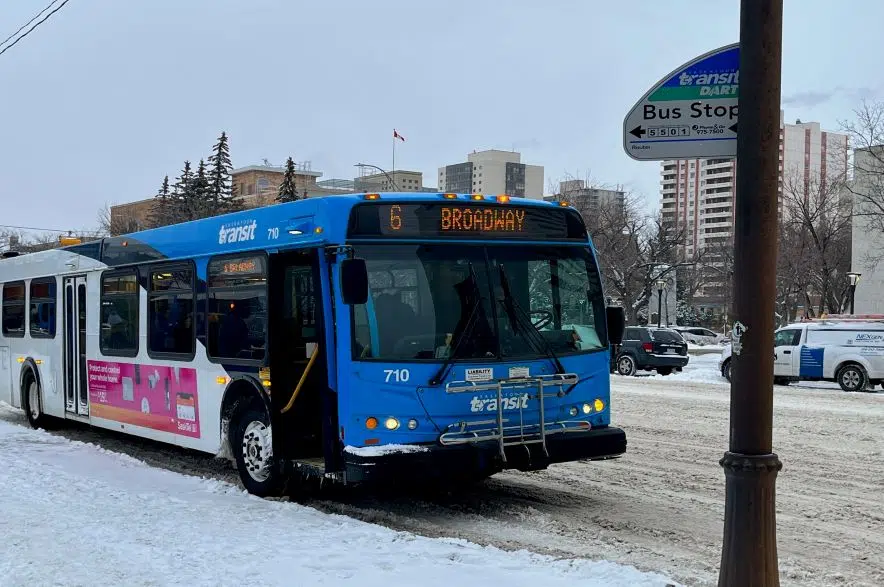The head of a transit union says Saskatoon bus drivers are facing physical violence from fare-dodging riders, and the problem is getting worse.
According to Darcy Pederson, Amalgamated Transit Union Local 615 president, the number of physical assaults targeting transit drivers is increasing.
“I believe the number last year was around 38 driver assaults,” Pederson said. “That doesn’t include the threats, the intimidation. There’s a lot of situations that don’t necessarily get reported.”
Pederson said fare evasion is at the root of 90 to 95 percent of the assaults on bus drivers. The assaults, he said, can occur when drivers remind passengers to pay the fare.
“The retaliation is threats, assaults, being spat on, and it’s gotten to the point where it’s just gotten out of control,” he said.
Passengers can also end up as targets if they call out someone who hasn’t paid a fare, Pederson said, or if an aggressive passenger is prevented from getting to the driver.
While Pederson estimated there were about 38 assaults on drivers over the past year, a City of Saskatoon information report showed between 2017 and 2020 there were a total of 28 assaults against transit operators “within the driving compartment,” and nine assaults that occurred “outside the driving compartment.” Most of the assaults, the report noted, occurred at the city’s Downtown Terminal.
The same report also listed a total of 308 “negative interactions” during that four-year time period, which included incidents like fare disputes, intoxication, spitting, urinating or defecating on a city bus, acts of aggression including threats and intimidation, and sexual harassment.
Mike Moellenbeck, interim director of Saskatoon Transit, said the city will present a detailed incident report to the Transportation Committee in March, but he was able to share some preliminary data. Negative interactions with drivers declined in 2022 compared to 2021, Moellenbeck said. He noted, however, that violence is always taken seriously.
“We definitely will not be dismissing the seriousness of assaults on an operator,” he said.
He said Saskatoon Transit’s top priority is the safety of riders and operators, and that assaults on drivers remain quite rare.
“It’s about two incidents for every one million rides on transit,” he said.
That amounts to eight or nine assaults per year.
While Pederson disputed those numbers, he said even one assault is too many, and some operators are even fearful for their safety.
“We have operators that are scared to come to work,” he said. “They’re waiting for an opening to go work in the utility portion in the garage.”
In 2021, the city began installing protective barriers to help keep drivers safe. Moellenbeck said about a third of the city’s fleet of about 130 vehicles have them installed. The remainder, he said, will be installed by this spring.
“That should have an impact on the feeling of safety for our employees, as well as reducing the chances of these assaults from taking place and providing better protection for our staff,” he said.
Moellenbeck said transit operators can report incidents to their supervisors, or call the city emergency line.
But even if a passenger is chronically aggressive, combative or regularly refuses to pay the fare, Pederson said drivers are not allowed to ban anyone from riding a city bus.
“The only way that they get banned from a bus is by compiling incidences that happen and an actual physical assault takes place on a bus, and it goes to court and charges are laid. Then the judge is asked to ban that person from the bus,” he said.
“Saskatoon Transit has stopped banning people from the buses.”











